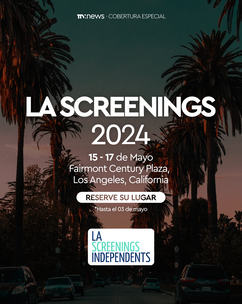A new edition of Mipcom concluded today, which resembled an “almost normal” event, with new content showcases, uncertainties regarding the future of Natpe, new monetization models, the search for co-production agreements, the distribution of profits on production and the future of ad sales revenue on SVOD platforms.
*By Rodrigo Ros, from Cannes, France
A new edition of Mipcom took place from October 17 to 20 at the Palais des Festivals in Cannes. A special market, marked by the return to an “almost normal” edition, with face-to-face meetings and a number of participants that was around 11,000 attendees, according to the organization.
On the other hand, this Thursday the event closed its doors, revealing a sharp drop in attendance, as is common during the final day. In any case, the conference agenda continued on this fourth day of the event, highlighting a presentation about the market’s freshest content, offered by The Wit.
As for the topics that have been evoked the most during this new edition of Mipcom, it is appropriate to highlight the uncertainty surrounding the future of Natpe, which already seems very close in terms of dates.
Likewise, the analysis on content monetization models from different perspectives stands out. The streaming wars seems to have definitively changed its field: from the fight for a growth of the critical mass, to an almost obsession with the profitability of the content catalog.
And if during the latest edition of Iberseries & Platino Industria one of the central topics on the conference agenda was new forms of financing content, during this latest edition of Mipcom, the emphasis seems to have been on forms of monetization.
This was demonstrated by one of the main speeches at the event, by Marco Bassetti, CEO of Banijay, who believes it is necessary to rethink the reason for the non-participation of producers in the distribution of profits after the launch and subsequent success of certain serial content.
This was also demonstrated by the conversations around the future of TV with the integration of advertising spaces in SVOD platforms and the consequent redistribution of the advertising cake.
The same reflection arises after the analysis of the mass commercialization of FAST channels, as well as the new forms of co-production.
In short, an event that has left behind more uncertainties than certainties, in a context of meetings and reunions that gave the feeling of having lived through a health crisis, something like a century ago.












